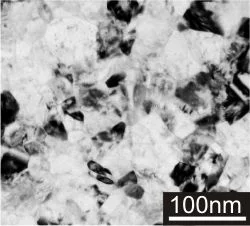The aim of the proposal is to develop knowledge on the interplay between the deformation mechanism in nanocrystalline metals (dislocation mediated, grain boundary accommodation mechanisms) resulting in the development of a constant deformation resistance. The latter is the origin of the limited ductility in tensile testing and the constant flow stress under compressive testing.The method proposed is stress controlled transient testing performed on different nanocrystalline metals, selected in order to catch the influence of the grain size and to explore the role of grain coarsening during deformation, the latter being a property that is not observed in all experimental available nanocrystalline metals. Transient experiments are not so frequently conducted, most probably due to the fact that they need accurate execution, careful analysis of the data and are time consuming.
The proposal has grown from former measurements carried out together with emeritus Prof. J-L. Martin (EPFL), and runs now in collaboration with Dr. K. Durst and Prof. W. Blum both from the University of Erlangen and Dr. P. Eisenlohr, MPIE Düsseldorf. The outcome of the proposed research will allow constitutive modelers to establish and to couple the laws of deformation kinetics and structure evolution in order to develop a model that can describe the stress-strain curve and the strain rate sensitivity of nanocrystalline metals.
Funding
This project is sponsered by the Swiss National Science Foundation - SNF 137881
Publications
Grain size and alloying effects on dynamic recovery in nanocrystalline metals
Sun Z, Van Petegem S, Cervellino A, Blum W, Van Swygenhoven H
Acta Materialia. 2016; 119: 104-114.;
https://doi.org/10.1016/j.actamat.2016.08.019
Dynamic recovery in nanocrystalline Ni
Sun Z, Van Petegem S, Cervellino A, Durst K, Blum W, Van Swygenhoven H
Acta Materialia. 2015; 91: 91-100.
https://doi.org/10.1016/j.actamat.2015.03.033
